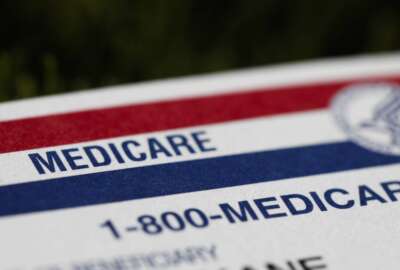Are you in the wrong health care plan?
Health plan expert Walton Francis says that about half of all federal employees are paying too much for heath care. Now that it's Open Season, feds have a chance to...
wfedstaff | April 17, 2015 9:35 pm
Correction: This story was updated to clarify the coverage of the Aetna Direct plan when it comes to prescriptions. [Dec. 1, 2014]
Roughly half of all federal employees are in health plans that they shouldn’t be in.
Walton Francis, editor of the Consumers’ CHECKBOOK Guide to Health Plans for Federal Employees and Annuitants, told For Your Benefit Monday that feds are spending way too much on their insurance because they’re not taking advantage of lower premium plans. 
This year’s Open Season — when federal employees can change their health plans — has some exciting opportunities for federal retirees, Francis said.
The Office of Personnel Management is always encouraging all of the federal health plans to expand, so that they can better complete with the Blue Cross – Blue Shield plans that dominate the program. In addition, OPM is seeking to improve coordination with Medicare for retirees who are over 65.
“Lo and behold, Aetna stepped up to the plate and hit what I think what you could call a home run,” Francis said. “They have a new plan called Aetna Direct. It’s a good plan for anybody, but it’s a spectacular plan for retirees with Medicare.”
For what Francis calls “a modest premium,” Aetna Direct provides 100 percent wraparound with Medicare Parts A and B.
“So, you pay nothing for doctor or hospital,” he said. “And it gives you what’s called a health reimbursement arrangement for those who are retired. For those who are still working, it’s a health savings account.”
This is similar to a health savings account. This can be used to pay the Medicare Part B premium, or, as Francis said, that money can be used to pay for those things not covered under Medicare, such as dental costs or prescription co-payments.
“If you use it just for prescription drugs, you will be completely covered for their cost up to the amount in the Medical Fund, which is $750 for self only and $1,500 for a family. So most people will spend nothing,” he said. “People with higher drug costs can gain by signing up for a Medicare Part D drug plan, which will be primary, and then use their Medical Fund only for copayments.”
Aetna Direct, which is a national plan, is not the only new plan to offer improved Medicare coordination this year.
“Blue Cross has an affiliate here called Care First,” Francis said. “Care First used to be just an HMO [health maintenance organization], but now they have two HMO plans and a high-deductible plan in the D.C. metro area. All three of their plans now will pay 100 percent wraparound with Medicare if you have Parts A and B. So they become pretty spectacular buys too.”
Another significant new plan in the D.C. area is called Innovation Health. Francis said it was similar to an HMO, but it ties together all of the facilities and physicians in the Inova Hospital System.
“Inova is the big banana of Northern Virginia,” he said, so it may be the right plan for feds working or living in that area.
The other big new for this year is that premiums remain flat at 3 percent.
“Health care costs have been rising much less than the historical average for the last four or five years,” Francis said. “That’s helped the insurance companies to keep premiums down.”
The Federal Employee Health Benefits Program continues do “a little better” than the Fortune 500 companies, he said, thanks to its competitive system that allows it to take advantage of competition among the health plans to keep premiums low.
Low premiums, though, aren’t the only measure of what makes an ideal plan. Some plans have high deductibles or services that aren’t covered.
“If every plan said pay 20 bucks for a doctor’s visit, that wouldn’t be that big of a deal,” Francis said. “But, that’s not the way they work. Almost all have deductibles of some kind or hospital stay payments, or in the high- deductible plans have, guess what, high deductibles.”
Federal employees can use Francis’ CHECKBOOK Guide to help them calculate which plan makes the most sense for them.
Many federal agencies allow their employees to access the CHECKBOOK Guide at work using Employee Express. Other agencies use an Intranet link or other means to access the guide. Click here to see how the different agencies provide access to the guide.
“Everyone, at the very least, should be aware of how the plan that you’re in changes this year,” Francis said. “Most of them are going to be trivial, but some of them might be important to you.”
RELATED STORIES:
Sleepwalking (or not) through open season
Feds’ health care costs to increase by 3.2 percent in 2015
Copyright © 2025 Federal News Network. All rights reserved. This website is not intended for users located within the European Economic Area.
Michael O’Connell is senior digital editor of Federal News Network optimizing content for the best user experience. Follow @moconnellWFED
Follow @moconnellWFED






